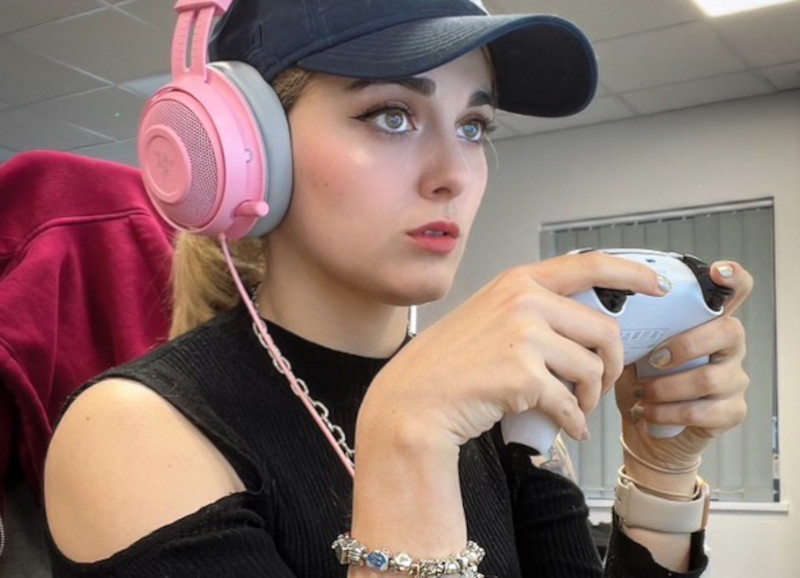How Video Games Get Their PEGI Ratings

We often get asked why a game has a particular PEGI rating, and how these are arrived at. Many people assume that this is a matter of opinion when in fact the PEGI criteria is a strict and repeatable system that consistently identifies what content is in a particular game.
This week we’ve taken some time to talk to Nikki Adams, an examiner at the VSC Rating Board who administer the PEGI ratings. We found out what it is like to work as a video game examiner, how someone might get a job like this, and what the process of a game getting a PEGI rating looks like.
How did you become a video game examiner?
So, I’d actually been interested in games for as long as I could remember and was doing a degree at university in digital media. It just so happened that right as I was finishing my degree, a friend pointed out that there was a vacancy at the VSC.

Generally, the VSC looks for people who have a good all-around knowledge of games and how they work. Ideally, they also need to be able to play games on a variety of consoles and devices. It’s also super important that examiners are able to analyse what a game contains and write reports about them, justifying the rating given.
What’s your favourite aspect of being a game examiner?
I think honestly, it’s being able to see and play the games before they’re released, you’d be amazed at how often you discover games that you might not have known about and games that you might not have played otherwise. Sometimes, I find a game I loved playing and then can’t wait for it to come out. Of course, the one downside is I can’t really talk about any of these games with anybody outside the company until they’ve been released to the public!
What’s your least favourite aspect of being a game examiner?
The truth is, there isn’t much I would complain about. I honestly enjoy the vast majority of my job, but if I had to nit-pick, some games I have to play aren’t exactly my cup of tea!

Another aspect is that, because we deal with developers around the world, you sometimes can’t get hold of people as quickly as you’d like. For example if you need to ask them a simple question, you might have to wait until the next working day to get a response.
Is there one thing you’d like people to better understand about PEGI ratings?
Because of space limitations on packaging and storefronts, people often only see the PEGI age rating and content descriptors, such as violence and bad language. However, we also offer much more detailed information on our website and on the PEGI app. This lets you know more details about what a game contains, including content that might not have played a part in the age rating but which might be of interest to some parents and young people – such as suicide.
Can you talk us through the process of how a game is examined?
First Contact: The developer or publisher completes a questionnaire and lets us know about the content of their game. They have to fill in questions regarding the types of violence, sex, bad language, drugs and other pertinent content the game contains. Because games can be very large, they’re best placed to know about everything in their game. This questionnaire provides a provisional rating for the game, which can be used for marketing and trailers, and which is subject to change when the game is officially rated.
A lot of people ask me if companies ever lie about the content of their game, or hide things to get a lower rating, and the truth is, if a company knowingly fails to declare relevant content, they can be fined for doing so. However, this isn’t really in anybody’s interests, mostly because changing a rating could result in a costly product recall.
Video Footage: We then look at gameplay footage showing the types of content the company disclosed on the questionnaire, as well as more general gameplay footage and other video content that occurs. This is important because it’s just not possible to play through every element of every game, so these videos are essential for the examiners to accurately check content.
Game Build: After looking at the video footage, we also play the game itself. This is to check the questionnaire has been filled in correctly, but also to make sure nothing has been missed.
This is really useful to assist the developer in landing on the appropriate age rating. Because we are the experts in the PEGI criteria, playing the game ensures we can cover any gaps in the developer’s knowledge.
Final Report: We then create a detailed internal report about the game and the reasons for its rating. This covers any changes that were made in the game and how the final rating was arrived upon. We also write the Additional Consumer Information, which is published on our website and provides a condensed rundown of the game and offers players more detail about how the rating was assessed.
After the game is approved, a licence is issued, meaning they can use their final rating in pre-launch materials, such as trailers and on online storefronts. Then finally, upon the release of the game the ACI and official PEGI record is made available to the public.





